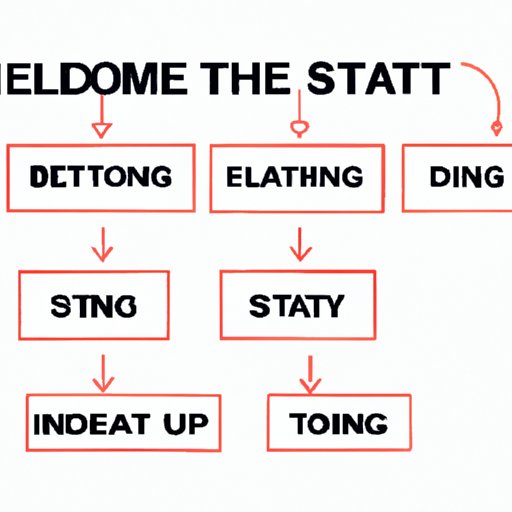Introduction
The introduction is the most important part of any piece of writing. It sets the tone for the reader, provides context and establishes the structure of the writing. As such, it is essential that you craft your introduction carefully in order to draw readers in and make them want to continue reading. In this article, we will explore some tips and tricks on how to start your introduction in order to make it successful.
Problem Identification
The first step to crafting an effective introduction is to identify the problem that you are trying to address. This could be a gap in knowledge, a need for clarification or simply a desire to provide a new perspective. Once you have identified the problem, you can use your introduction to explain why the problem needs to be addressed and how your writing will help to address it.
Scene Setting
A great way to engage your reader from the outset is to set a vivid scene. Describe the setting in detail, using sensory language to bring it to life. This can be used to introduce the topic of your writing and provide context for the reader. For example, if you are writing about climate change, you could start by describing a beach that has been affected by rising sea levels.
Pose Thought-Provoking Questions
Another effective way to start an introduction is to pose a thought-provoking question. This encourages the reader to think critically about the topic and can also be used to introduce the main points that you plan to discuss in the body of your writing. Be sure to pose questions that are relevant to the topic and can be answered in the body of your writing.
Offer Interesting Statistics
Statistics can be used to provide evidence for your argument and can be an effective way to start an introduction. Find reliable statistics related to your topic and use them to capture the attention of your reader and show the relevance of your argument. Be sure to include the source of the statistic so that the reader knows where it comes from.
Share an Anecdote
An anecdote is a short, personal story that can be used to illustrate a point or provide a human connection to a topic. Sharing an anecdote at the start of your introduction can be a great way to engage the reader and give them insight into the subject. Just be sure to keep the anecdote brief and relevant to the topic that you are discussing.
Define Key Terms
If there are any technical terms or buzzwords related to your topic, it can be helpful to define them in your introduction. This will ensure that the reader understands the terminology that you are using and can follow your argument without confusion. Make sure to define the terms clearly and concisely, without going into too much detail.
Relevant Quotation
Including a relevant quotation in your introduction can be a great way to generate interest and provide context for your argument. Choose a quote that is related to the topic that you are discussing and use it to illustrate a point or demonstrate the importance of the issue. Be sure to cite the source of the quote so that the reader knows where it comes from.
Conclusion
Starting an introduction can be challenging but with the right approach, you can make sure that your introduction captures the reader’s attention and sets the tone for the rest of your writing. By posing thought-provoking questions, sharing anecdotes, offering interesting statistics, defining key terms and including relevant quotations, you can create an introduction that engages the reader and sets up your argument in an effective way.
(Note: Is this article not meeting your expectations? Do you have knowledge or insights to share? Unlock new opportunities and expand your reach by joining our authors team. Click Registration to join us and share your expertise with our readers.)
